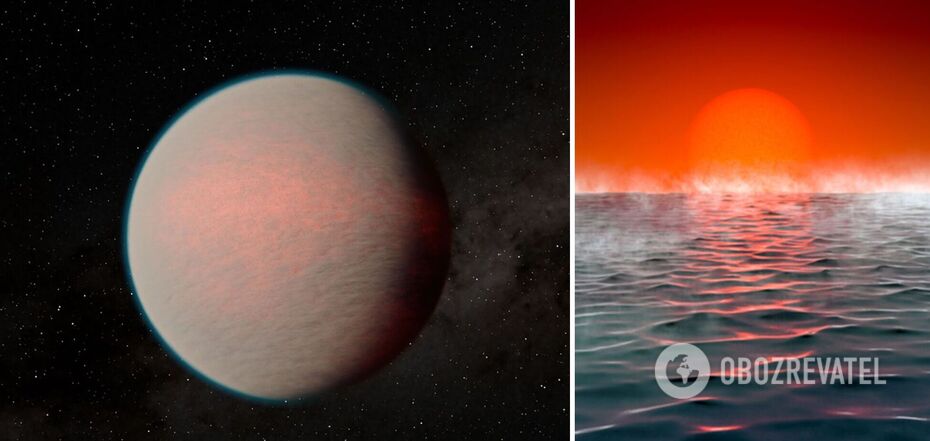Life
Planet with a glowing atmosphere confused and surprised scientists: what is known about it
Scientists have been able to take a closer look at the mysterious planet GJ 1214b with a glowing atmosphere that has long stumped them. NASA's James Webb Telescope allowed them to see it as never before.
The scientists described the new study of the planet in an article for the journal Nature. They suggest that the glowing atmosphere may be a sign of a large amount of steam, which, in turn, may indicate that the planet is a water world.
The planet GJ 1214b is located outside our solar system at a distance of about 40 light years. It was discovered back in 2009, but the thick haze that covered it did not give scientists any chance to get a better look at the planet. Eliza Kempton, an associate professor of astronomy at the University of Maryland and lead author of the study, admitted that she had been trying to get a clearer picture of the planet for more than a decade.
"Whatever the haze or clouds are made of, it's not what we expected. It's bright, it's reflective, and it's confusing and surprising," said Kempton.
She predicts that only further research will help unravel the mystery of this planet.
The scientists assume that they are dealing with a water world whose atmosphere "contains water vapour - perhaps even in large quantities". But this cannot yet be stated as a fact, as the absorption of water vapour and methane may look similar in observations.
At the same time, Kempton is convinced that the atmosphere seen by astronomers is not primordial, as it does not match the composition of the star around which it was formed.
"It (the atmosphere - Ed.) either lost a lot of hydrogen if it started with a hydrogen-rich atmosphere, or was formed from heavier elements - icy, water-rich material," the scientist said.
Her research suggests that GJ 1214b could have formed further away from its star and then moved to its current orbit. This could explain the presence of large amounts of water on the surface.
After much research, scientists were able to determine that the temperature on the daytime side of the planet reaches 279 degrees Celsius, and the nighttime side - up to 165 degrees. Although it is a very hot planet by Earth's standards, Kempton notes that scientists expected it to be even hotter.
The fact is that the extremely shiny atmosphere, which came as a surprise to researchers, reflects most of the light from the parent star rather than absorbing it, heating the planet.
Earlier, OBOZREVATEL also reported that life may exist on four exoplanets near the Earth, but people do not have the technology to prove it.
Subscribe to OBOZREVATEL's Telegram and Viber channels to keep up with the latest news.




























